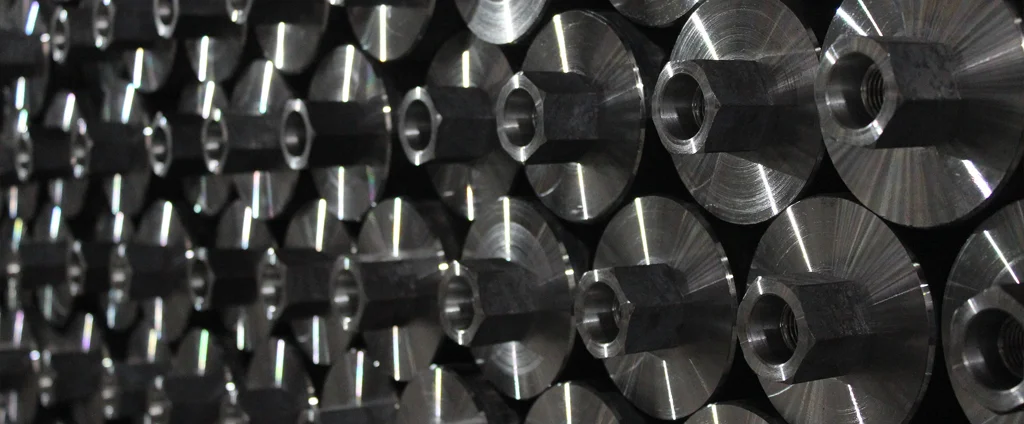SAE/AISI 1035 Carbon Steel (UNS G10350)

SAE/AISI 1035 carbon steel is a medium-carbon steel that offers excellent machinability, formability, and weldability. It is commonly used in various industrial applications where moderate strength, toughness, and wear resistance are essential.
| Chemical Composition | ||
|---|---|---|
| Element | Min | Max |
| Iron | 98.63% | 99.09% |
| Carbon | 0.31% | 0.38% |
| Manganese | 0.60% | 0.90% |
| Phosphorous | —— | 0.04% |
| Sulfur | —— | 0.05% |
The following table provides a list of SAE/AISI 1035 properties in both SI and US customary/Imperial units.
Click on the button to switch between Metric and Imperial units.
| Physical Properties | Metric |
|---|---|
| Density | 7850 kg/m3 |
| Mechanical Properties | Metric |
| Tensile Strength (Ultimate) | 550 - 620 MPa |
| Tensile Strength (Yield) | 300 - 530 MPa |
| Young’s Modulus (E) | 190 - 210 GPa |
| Bulk Modulus (K) | 140 GPa |
| Shear Modulus (G) | 80 GPa |
| Elongation at Break | 10 - 30% |
| Poisson’s Ratio (ν) | 0.27 - 0.30 |
| Brinell Hardness | 160 - 180 |
| Thermal Properties | Metric |
| Thermal Conductivity | 51 W/m·K |
| Specific Heat Capacity (Cp) | 486 J/kg·K |
| Coefficient of Thermal Expansion (αL) | 1.1×10-5 1/°C |
| Electrical Properties | Metric |
| Electrical Conductivity | 4.1×106 S/m |
| Electrical Resistivity | 2.4×10-7 Ω·m |
The values in this table are approximate and can vary depending on various factors such as the specific manufacturing process and heat treatment applied to the alloy.
Advantages & Disadvantages of 1035 Carbon Steel
| Advantages | Disadvantages |
|---|---|
| Cost-effective | Limited hardness |
| Good machinability | Low strength |
| Good formability | Limited corrosion resistance |
| Good weldability | Limited temperature resistance |
Applications of 1035 Carbon Steel
SAE/AISI 1035 carbon steel is widely used in numerous industries due to its moderate strength, good machinability, and formability. It is ideal for a range of applications, including:
- Shafts and Axles: Used in machinery, automotive components, and agricultural equipment, where moderate strength and wear resistance are required for transmitting torque and handling rotational loads.
- Bolts, Nuts, and Fasteners: Commonly used for manufacturing bolts, nuts, and fasteners due to its good machinability, which allows for easy production of threaded components for secure connections.
- Gears and Sprockets: Suitable for gears and sprockets in applications where high strength is not essential, such as gearboxes, mechanical power transmission systems, and industrial machinery.
- Couplings and Fittings: Employed in the production of couplings, fittings, and connectors used in piping systems, hydraulic systems, and fluid handling applications, thanks to its formability and weldability.
- Construction Components: Utilized in construction components like beams, columns, and structural parts for projects where moderate strength is sufficient, such as in building frameworks and bridges.
- Tools and Dies: When heat-treated, it is used in producing tools and dies, including cutting tools, drills, and dies for metalworking processes.
- General Machinery Parts: Used in manufacturing components such as shafts, bushings, levers, and brackets that require moderate strength and good formability.
- Automotive Parts: Suitable for automotive parts like crankshafts and connecting rods, where moderate strength and machinability are crucial for non-critical components.
